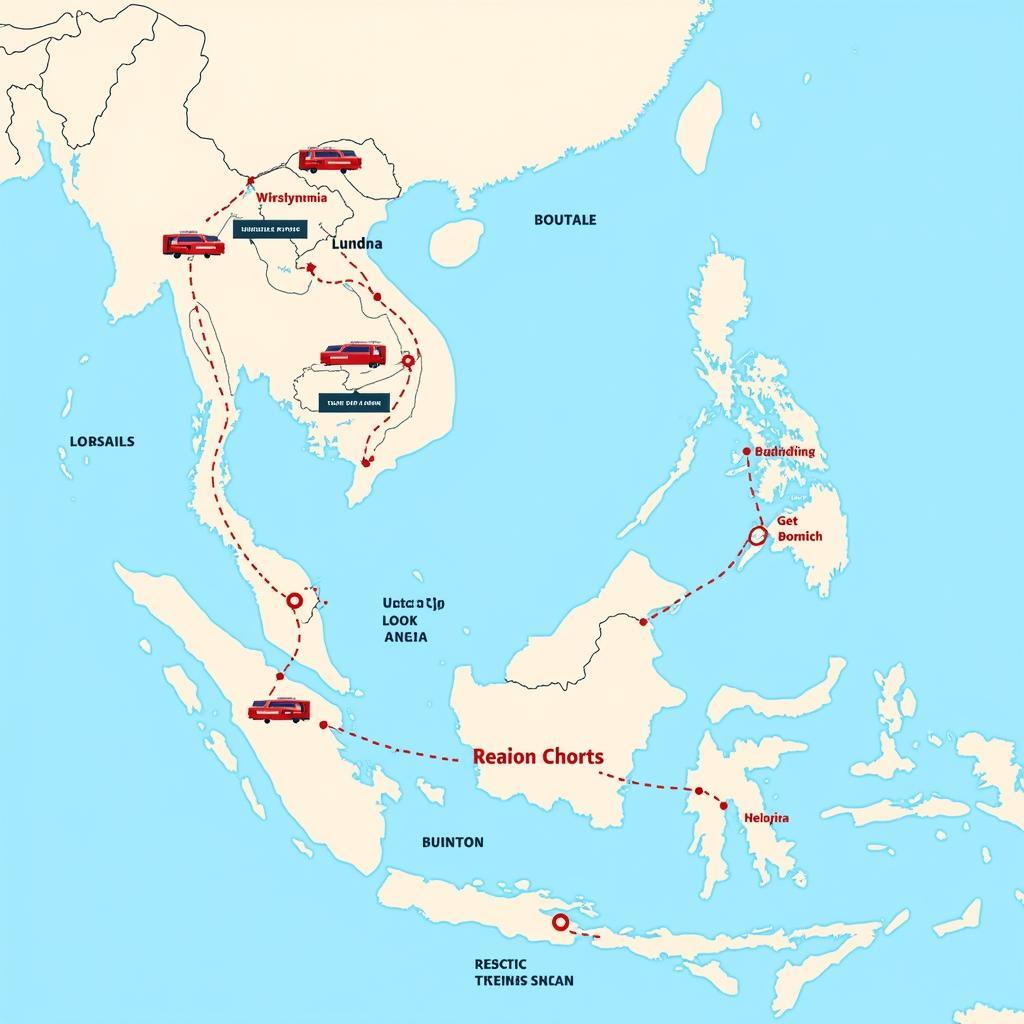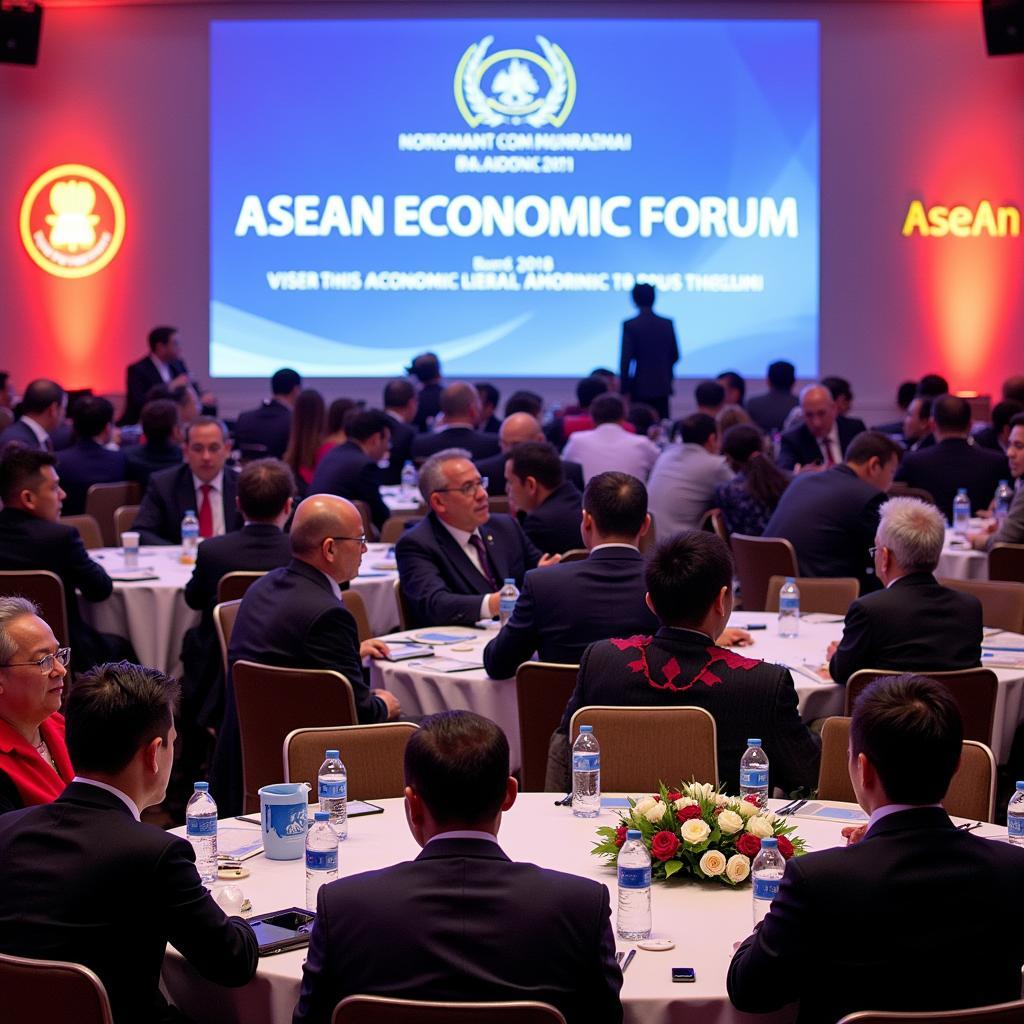Developing a robust business plan is crucial for any venture’s success, and businesses eyeing the dynamic ASEAN market are no exception. A well-structured ASEAN business plan acts as your roadmap, outlining your goals, strategies, and potential challenges while navigating this unique landscape.
Understanding the ASEAN Market: A Foundation for Success
 ASEAN Market Overview
ASEAN Market Overview
Before diving into the specifics of your business plan, it’s essential to grasp the ASEAN context. The region boasts a diverse consumer base of over 650 million people, experiencing rapid economic growth, and witnessing a surge in digital adoption. Understanding the cultural nuances, regulatory frameworks, and consumer behaviors within each ASEAN nation is key to developing a plan that resonates.
Key Components of Your ASEAN Business Plan
A successful ASEAN business plan delves beyond standard business planning elements. Here’s a breakdown of crucial components:
1. Executive Summary: Your ASEAN Business Pitch
 Writing a Compelling Executive Summary
Writing a Compelling Executive Summary
While traditionally placed at the beginning, it’s often wise to craft your executive summary after finalizing other sections. This section should succinctly capture the essence of your ASEAN business venture, highlighting:
- Problem: What market gap are you addressing within ASEAN?
- Solution: How does your product/service provide a unique solution?
- Market: Who are your target customers in ASEAN?
- Competition: Who are your main competitors within the region?
- Team: What expertise do you bring to navigate the ASEAN market?
- Financial Projections: Provide a realistic outlook for your ASEAN venture.
- Funding: Outline your funding requirements and potential sources.
2. In-Depth Market Analysis: ASEAN Opportunities and Challenges
This section demands thorough research. Analyze the specific ASEAN nations you’re targeting, understanding their:
- Economic Landscape: GDP growth, inflation rates, key industries.
- Political Climate: Government stability, trade agreements, regulations.
- Socio-Cultural Factors: Languages, customs, consumer preferences.
- Technological Advancement: Internet penetration, e-commerce trends.
3. Defining Your Target Audience: The ASEAN Consumer
 Defining Your Target Audience in ASEAN
Defining Your Target Audience in ASEAN
ASEAN is not a homogenous market. Identify your ideal customer profile within your chosen ASEAN nations. Consider factors like:
- Demographics: Age, location, income levels, occupation.
- Psychographics: Lifestyle, values, interests, aspirations.
- Consumer Behavior: Purchasing habits, brand loyalty, online behavior.
4. Competitive Analysis: ASEAN Business Landscape
Thoroughly research your competitors operating within your chosen ASEAN markets. Analyze their:
- Market Share: What is their current presence and dominance?
- Strengths and Weaknesses: What are their advantages and disadvantages?
- Pricing Strategies: How do they position themselves in the market?
- Marketing Tactics: Analyze their online and offline marketing efforts.
This analysis helps you identify opportunities for differentiation and market positioning.
5. Operations and Logistics: Navigating the ASEAN Terrain
 Logistics and Supply Chain Management in ASEAN
Logistics and Supply Chain Management in ASEAN
Address the practical aspects of running your business in ASEAN:
* **Legal Structure**: Determine the most suitable legal entity for your business. Consider consulting with legal experts familiar with ASEAN regulations.
* **Team and Resources**: Outline your team's expertise and identify any skill gaps. Will you hire locally or bring in talent?
* **Supply Chain**: Detail your sourcing, production, and distribution strategies within ASEAN. Consider factors like import/export regulations, customs procedures, and potential trade barriers.
* **Technology Infrastructure**: Assess the availability and reliability of internet access, payment gateways, and other essential technological infrastructure.6. Marketing and Sales Strategy: Reaching Your ASEAN Audience
Develop a localized marketing strategy tailored to your target audience within each ASEAN nation:
* **Language**: Translate your marketing materials into local languages.
* **Cultural Sensitivity**: Ensure your messaging aligns with local values and customs.
* **Digital Marketing**: Utilize social media platforms, search engine optimization (SEO), and online advertising to reach your audience. Consider the popularity of specific platforms within each country.
* **Offline Marketing**: Explore traditional media channels like print, radio, and television if they align with your target audience's media consumption habits.
* **Distribution Channels**: Determine the most effective ways to get your product/service to your ASEAN customers. Will you leverage e-commerce platforms, establish partnerships with local distributors, or set up your own physical presence?7. Financial Projections and Funding: ASEAN Investment Landscape
Provide a realistic financial forecast for your ASEAN venture. This should include:
* **Revenue Projections**: Estimate your sales based on market research and competitive analysis.
* **Cost Structure**: Outline your fixed and variable costs, including staffing, marketing, rent, and production.
* **Profitability Analysis**: Demonstrate the potential for profitability and return on investment (ROI).8. Exit Strategy: Planning for the Future in ASEAN
While your focus is on establishing your ASEAN presence, having an exit strategy is crucial for long-term planning. Consider potential scenarios like:
* **Acquisition**: Identify potential buyers within your industry operating in ASEAN.
* **Initial Public Offering (IPO)**: Explore the possibility of listing on a stock exchange in ASEAN.
* **Sale to a Strategic Investor**: Target investors specifically interested in the ASEAN market.Conclusion: Your ASEAN Business Journey Starts Now
Crafting a winning ASEAN business plan is a meticulous process that demands thorough research, adaptability, and a deep understanding of the region’s unique dynamics. By meticulously addressing each component, you equip your venture for success in one of the world’s most vibrant and rapidly growing markets.
Need assistance navigating the intricacies of ASEAN business development? Contact our team at 0369020373, email us at [email protected], or visit us at Thôn Ngọc Liễn, Hiệp Hòa, Bắc Giang, Việt Nam. We’re available 24/7 to support your ASEAN business endeavors.

